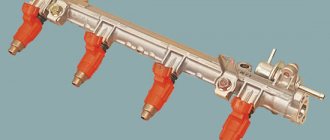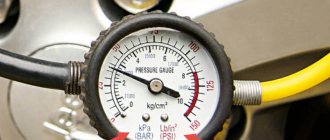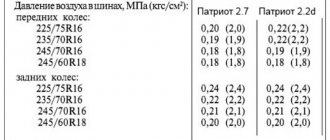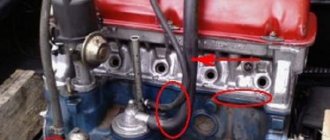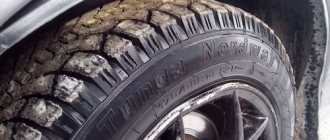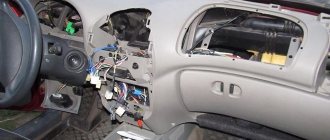Incorrect tire pressure affects a dozen vehicle parameters - from fuel consumption, handling and braking distance to tire and suspension life. Any car compressor has a built-in pressure gauge, but the accuracy of such devices is not so great, so a separate pressure gauge is still needed on the farm. Especially in the off-season, since when the ambient temperature drops by 10 °C, the tire pressure decreases by approximately 0.1 bar. And if the pressure was last set in the summer heat, then the tires may meet autumn with insufficient pressure.
Pressure gauge scale for tire inflation
All owners of wheeled vehicles - motorists, motorcyclists and cyclists - have to monitor tire pressure.
For each type of transport there is a range of optimal pressures, which, among other things, can be found out by the rubber markings. Most often you have to deal with bar or psi units. Pressure in inches per square meter (psi) is used to mark tires manufactured in England and America. Ba r is a unit for measuring pressure, adopted in European countries, including ours. It is almost equivalent to the technical atmosphere.
For a single calculation it is enough to use the equality:
Precision to three decimal places is not usually required. In most sources you will find that 1 bar
15 psi. But the higher the pressure, the greater the error in calculations according to this approximate equality. Therefore, multiplying by 14.5 is the best option.
Measurement errors
Tire pressure is quite dependent on temperature, so the pressure gauge readings will differ in the warm and cold seasons, even if the same volume of gas is pumped. The tire also heats up during driving, due to friction with the road surface.
Measurements are usually carried out “cold”, when the car has driven no more than 3 km at low speed or has stood for at least 2 hours. When the condition cannot be met, you need to subtract 0.3 bar from the received readings
4.5 psi. Pressure measured in winter and summer can differ much more: for every 5 degrees Celsius drop in temperature, the reading decreases by 1 psi.
It is sometimes difficult for a non-professional to determine the exact pressure, since in mechanical instruments an error almost always appears. Now you can buy pressure gauges with “smart” microcircuits that make corrections for temperature. Whether it’s worth purchasing a multifunctional device, trusting your intuition or the skill of a service station worker is up to you to decide. The main thing is that the tire pressure is suitable for a comfortable and safe ride.
Then my colleagues and I had a dispute about which scale to use to measure blood pressure. Just now I bought a simple pressure gauge, it has two scales. Out of habit, I measured the pressure using an external scale (I also have two of them on the pump, but I didn’t read what it means)
So, the correct scale is the one designated as “kgf/cm2”, or “bar”. The one on which “PSI” is written is not correct, meaning for determining the “atmospheres” in the wheels.
Atmospheres for a wheel need to be looked at only by “kgf/cm2”, or “bar”, i.e. In relation to my pressure gauge, you need to look at the internal, red scale. On my pump, on the contrary, the internal scale is marked “PSI”, which is where the confusion arose.
Moral - always read what it means where

